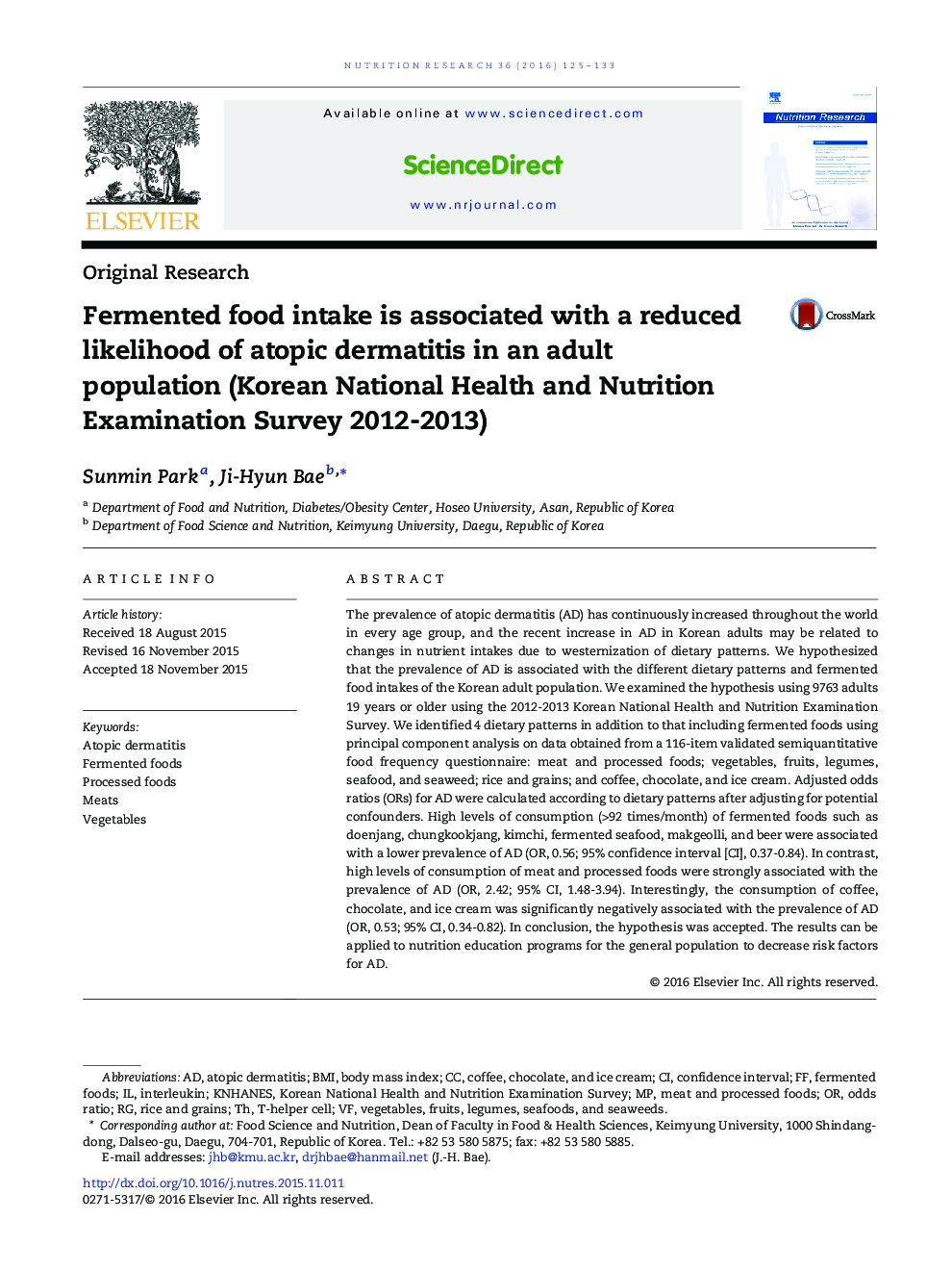| کد مقاله | کد نشریه | سال انتشار | مقاله انگلیسی | نسخه تمام متن |
|---|---|---|---|---|
| 2808872 | 1157977 | 2016 | 9 صفحه PDF | دانلود رایگان |
The prevalence of atopic dermatitis (AD) has continuously increased throughout the world in every age group, and the recent increase in AD in Korean adults may be related to changes in nutrient intakes due to westernization of dietary patterns. We hypothesized that the prevalence of AD is associated with the different dietary patterns and fermented food intakes of the Korean adult population. We examined the hypothesis using 9763 adults 19 years or older using the 2012-2013 Korean National Health and Nutrition Examination Survey. We identified 4 dietary patterns in addition to that including fermented foods using principal component analysis on data obtained from a 116-item validated semiquantitative food frequency questionnaire: meat and processed foods; vegetables, fruits, legumes, seafood, and seaweed; rice and grains; and coffee, chocolate, and ice cream. Adjusted odds ratios (ORs) for AD were calculated according to dietary patterns after adjusting for potential confounders. High levels of consumption (>92 times/month) of fermented foods such as doenjang, chungkookjang, kimchi, fermented seafood, makgeolli, and beer were associated with a lower prevalence of AD (OR, 0.56; 95% confidence interval [CI], 0.37-0.84). In contrast, high levels of consumption of meat and processed foods were strongly associated with the prevalence of AD (OR, 2.42; 95% CI, 1.48-3.94). Interestingly, the consumption of coffee, chocolate, and ice cream was significantly negatively associated with the prevalence of AD (OR, 0.53; 95% CI, 0.34-0.82). In conclusion, the hypothesis was accepted. The results can be applied to nutrition education programs for the general population to decrease risk factors for AD.
Journal: Nutrition Research - Volume 36, Issue 2, February 2016, Pages 125–133
